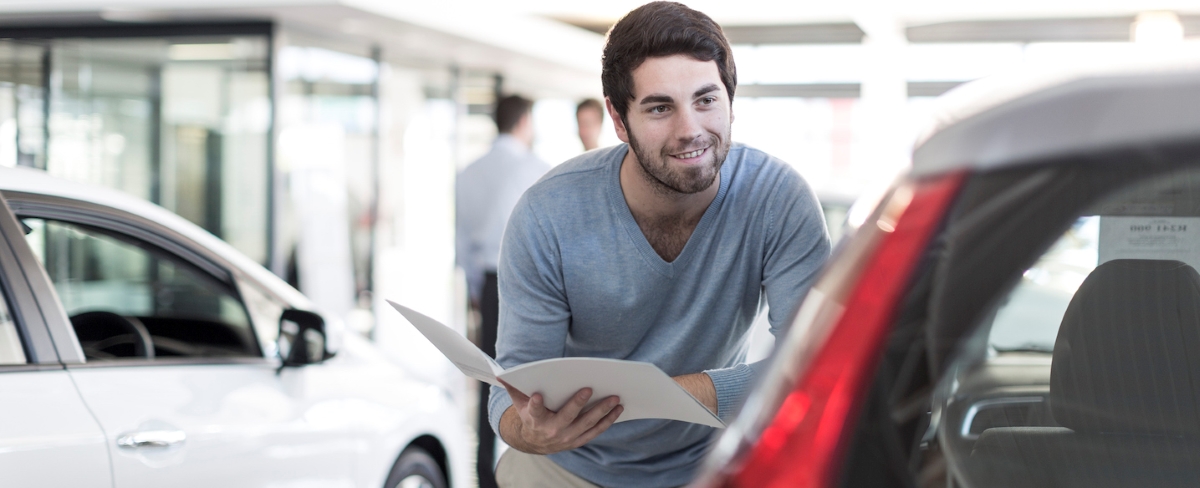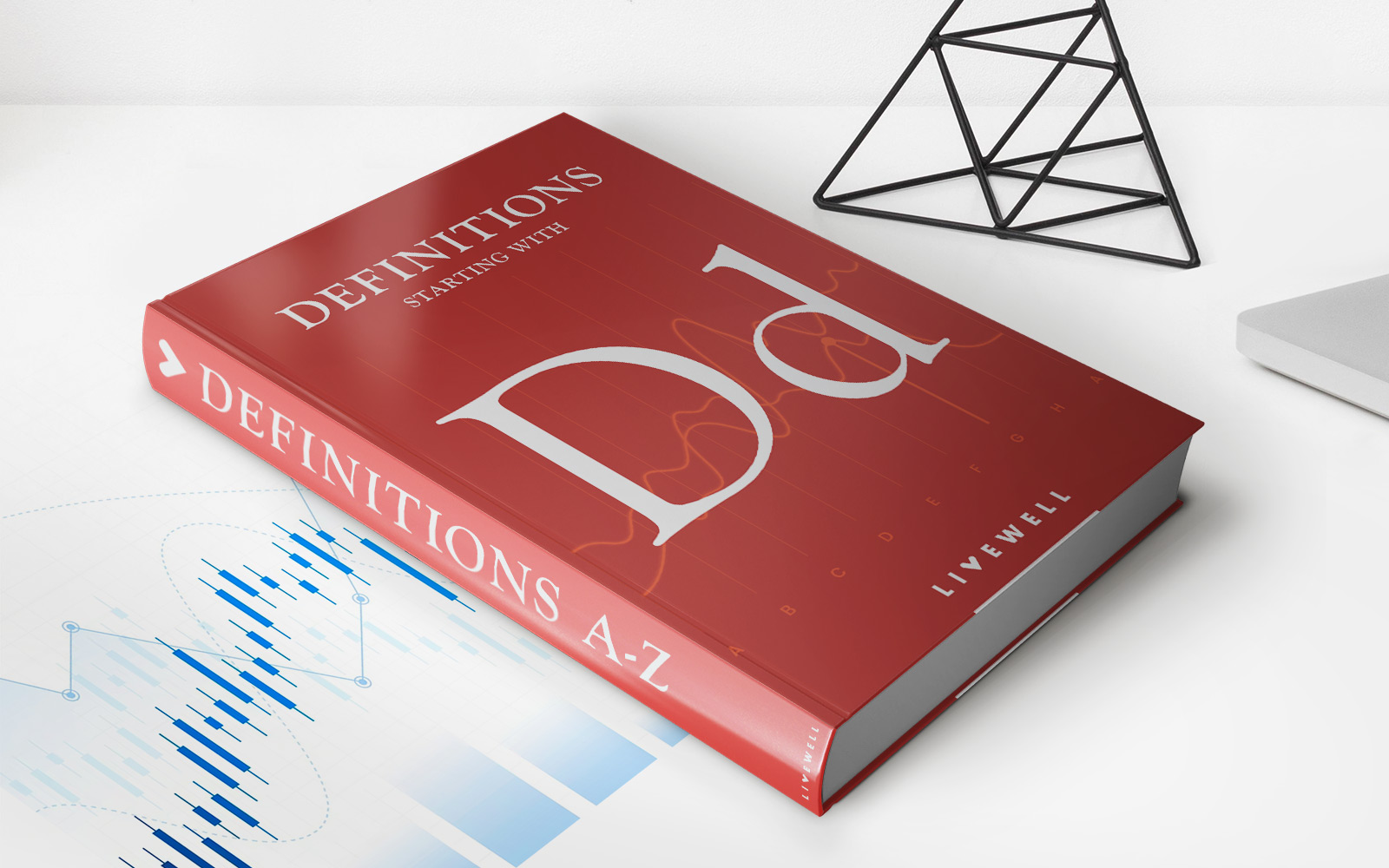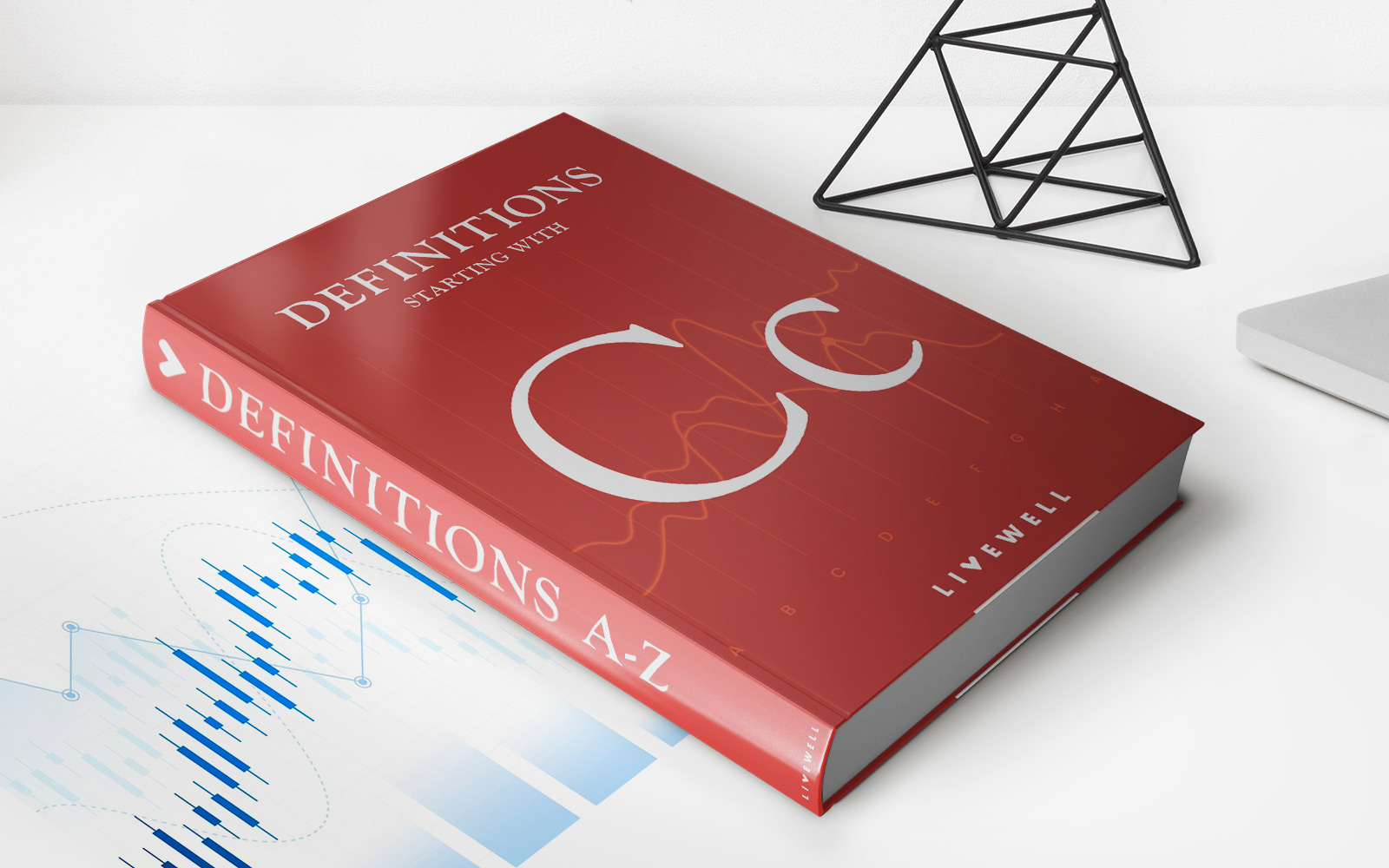Home>Finance>How To Buy A Car With Bad Credit And No Down Payment


Finance
How To Buy A Car With Bad Credit And No Down Payment
Published: January 12, 2024
Looking to finance a car purchase with bad credit and no down payment? Learn how to buy a car without breaking the bank and get back on the road in no time!
(Many of the links in this article redirect to a specific reviewed product. Your purchase of these products through affiliate links helps to generate commission for LiveWell, at no extra cost. Learn more)
Table of Contents
- Introduction
- Understanding Bad Credit and No Down Payment
- Evaluating Your Financial Situation
- Researching and Choosing the Right Car
- Improving Your Credit Score
- Exploring Car Financing Options
- Applying for a Car Loan
- Negotiating the Terms of the Loan
- Making a Down Payment
- Finalizing the Purchase
- Alternative Options for Buying a Car with Bad Credit and No Down Payment
- Conclusion
Introduction
Buying a car is an exciting milestone, but it can be a more challenging task if you have bad credit and no down payment. However, don’t despair! With the right knowledge and strategies, it’s still possible to purchase a car, even with an unfavorable credit history and without having any money upfront.
Having bad credit means that you have a low credit score, indicating a history of late payments, defaults, or other financial difficulties. Such a credit profile can make it challenging to secure traditional car financing options, as lenders see you as a higher-risk borrower.
Add to that the lack of a down payment, and the situation may seem even more daunting. A down payment is an upfront payment that reduces the loan amount and shows your commitment to the purchase. However, not having one doesn’t mean you can’t buy a car.
In this article, we’ll provide you with a comprehensive guide on how to buy a car with bad credit and no down payment. We’ll walk you through the steps from understanding your financial situation to exploring alternative options. So, let’s get started on your journey towards owning a car, regardless of your credit and financial circumstances!
Understanding Bad Credit and No Down Payment
Before diving into the car-buying process, it’s essential to have a clear understanding of what it means to have bad credit and no down payment. This knowledge will help you navigate the challenges ahead and make informed decisions.
Bad credit refers to a low credit score, typically below 600, as assessed by credit bureaus. Your credit score is a numeric representation of your creditworthiness, based on factors such as payment history, outstanding debts, length of credit history, and new credit applications. A low credit score suggests a higher risk of defaulting on payments, which makes lenders hesitant to approve loans.
On the other hand, a down payment is a lump sum payment made at the time of purchase, reducing the total loan amount. It serves as an indication of financial stability and commitment to the purchase. Not having a down payment means you’ll need to find alternative ways to finance your car purchase.
It’s important to understand that bad credit and no down payment can result in higher interest rates and more restrictive loan terms. Lenders may also require additional documentation and collateral to secure the loan. However, with the right strategies and preparation, you can still find options that suit your needs and financial situation.
Now that we have a clear understanding of the challenges ahead, let’s move on to the next step in the car-buying process: evaluating your financial situation.
Evaluating Your Financial Situation
Before proceeding with buying a car, it’s crucial to evaluate your financial situation carefully. This step will help you determine how much you can afford and what options are realistic for your circumstances.
Start by assessing your income and expenses. Calculate your monthly income after taxes and subtract all your monthly expenses, including rent/mortgage payments, utilities, insurance, groceries, and other bills. This will give you a clear picture of your disposable income.
Next, analyze your credit report. Obtain a free copy of your credit report from each of the major credit bureaus (Equifax, Experian, and TransUnion) and review it for any errors or discrepancies. Report any inaccuracies and work towards resolving them to improve your credit score.
Consider your debt-to-income ratio (DTI), which is a comparison of your monthly debt payments to your monthly income. Lenders typically prefer a DTI of 36% or lower, so if your ratio is higher, you may need to focus on reducing your debt or increasing your income before buying a car.
After evaluating your financial situation, establish a realistic budget for purchasing a car. Consider not only the monthly loan or lease payment, but also factors like insurance, maintenance, and fuel costs. Don’t stretch your budget too thin, as this may lead to financial stress down the road.
By carefully evaluating your financial situation, you’ll have a better understanding of what you can comfortably afford when it comes to buying a car with bad credit and no down payment.
Now that you’ve assessed your financial standing, it’s time to move on to the next step: researching and choosing the right car.
Researching and Choosing the Right Car
Once you have a clear understanding of your financial situation, it’s time to research and choose the right car that fits your needs and budget. Here are some steps to guide you in this process:
- Identify your needs: Consider your lifestyle, daily commute, and any specific requirements you have for the car, such as seating capacity, fuel efficiency, cargo space, or safety features.
- Set your budget: Based on your financial evaluation, determine the maximum price range you can afford. Remember to account for additional costs such as registration fees, insurance, and maintenance.
- Research different car models: Use online resources, car reviews, and consumer reports to explore various car models. Look for reliable options with good resale value and positive reviews regarding their longevity and maintenance costs.
- Compare prices: Once you’ve narrowed down your options, compare prices from different dealerships and private sellers. Consider factors such as mileage, condition, and any included warranties or additional features.
- Consider certified pre-owned cars: Buying a certified pre-owned (CPO) car can be a smart choice when dealing with bad credit and no down payment. CPO cars undergo rigorous inspections and come with extended warranties, providing you with peace of mind.
- Explore alternative car types: If traditional car financing options are limited, consider alternatives like used cars, lease takeovers, or buy-here-pay-here dealerships. These options may have more flexible requirements and can help you get into a vehicle.
Remember, it’s important to stay within your budget and choose a reliable car that meets your needs. Don’t rush into a decision; take your time and thoroughly research options before making a choice.
Now that you have a clear idea of the car you want, the next step is to work on improving your credit score.
Improving Your Credit Score
If you have bad credit, taking steps to improve your credit score can work in your favor when it comes to buying a car. While it may take time, effort, and discipline, the following strategies can help boost your creditworthiness:
- Paying bills on time: Late payments have a significant negative impact on your credit score. Make it a priority to pay all your bills on time, including credit card payments, loan payments, and utility bills. Consider setting up automatic payments or reminders to ensure you don’t miss any deadlines.
- Reducing debt: High debt levels can lower your credit score. Focus on paying down your existing debts, starting with those that have the highest interest rates. Consider creating a debt repayment plan and sticking to it to gradually reduce your debt and improve your creditworthiness.
- Keeping credit utilization low: Aim to keep your credit utilization ratio below 30%. This means using no more than 30% of your available credit limit on credit cards or other lines of credit. Keeping your balances low demonstrates responsible credit management and can positively influence your credit score.
- Building a positive credit history: If you have limited credit history, it’s important to start building a positive track record. Open a secured credit card or become an authorized user on someone else’s credit card to establish credit. Make sure to use credit responsibly and pay off your balances in full each month.
- Disputing errors on your credit report: Regularly review your credit report for any errors or inaccuracies that may be negatively impacting your credit score. If you find any, file a dispute with the credit reporting agencies to have them corrected and removed from your report.
Improving your credit score takes time, but the effort is well worth it. A higher credit score can result in better loan terms, lower interest rates, and more favorable financing options when purchasing a car.
With your credit score on the right track, it’s time to explore car financing options that can help you secure a loan.
Exploring Car Financing Options
When buying a car with bad credit and no down payment, it’s important to explore different financing options to find the best fit for your situation. Here are some alternatives to traditional car financing to consider:
- Subprime lenders: Subprime lenders specialize in providing loans to borrowers with less-than-perfect credit. While interest rates may be higher, these lenders are more willing to work with individuals who have bad credit. Shop around and compare offers from different subprime lenders to find the most favorable terms.
- Credit unions: Credit unions are nonprofit organizations that often offer more flexible lending terms to their members. If you are a member of a credit union, check if they provide auto loans for individuals with bad credit.
- Online lenders: Online lenders have become increasingly popular due to their convenience and accessibility. Many online lenders cater to individuals with bad credit and offer preapproval options, allowing you to see loan offers without impacting your credit score.
- Buy-here-pay-here dealerships: Buy-here-pay-here (BHPH) dealerships offer in-house financing, meaning they finance the car directly to the buyer. These dealerships usually have less stringent credit requirements, making them an option for those with bad credit and no down payment. However, be aware that BHPH loans often come with higher interest rates.
- Co-signer: If you can find a trusted individual with good credit willing to co-sign the loan, you may have a better chance of securing financing on more favorable terms. Keep in mind that the co-signer is equally responsible for the loan, and any missed payments will affect both parties’ credit scores.
When exploring car financing options, read the terms and conditions carefully, including the interest rates, loan duration, and any additional fees or charges. Assess the total cost of the loan over its duration to ensure it fits within your budget.
With the financing options explored, it’s time to move forward and start the application process for a car loan.
Applying for a Car Loan
Once you’ve identified the financing option that suits your needs, it’s time to apply for a car loan. While the specific requirements may vary depending on the lender and your credit situation, here are some general steps to guide you through the application process:
- Gather necessary documents: Before applying, gather the required documents such as proof of income, proof of residence, identification, and a valid driver’s license. These documents demonstrate your ability to repay the loan and your identity.
- Submit an application: You can typically apply for a car loan online, over the phone, or in person at the lender’s office. Provide accurate and truthful information on your application to increase the chances of approval.
- Verify and provide additional information: After submitting your application, the lender may request additional documentation or information to assess your creditworthiness. Be prepared to provide any requested documents promptly.
- Review loan terms: Once your application is processed, carefully review the loan terms, including the interest rate, loan amount, monthly payment, and any fees or penalties. Understand the total cost of the loan and ensure it aligns with your budget.
- Accept the loan offer: If you are satisfied with the loan terms, accept the offer by signing the necessary documents. Keep a copy of the agreement for your records.
It’s important to note that applying for multiple loans within a short period can negatively impact your credit score. To minimize the impact, complete your loan applications within a 14- to 45-day window, as credit scoring models often treat multiple loan inquiries within this timeframe as a single inquiry.
Once you’ve successfully secured a car loan, the next step is to negotiate the terms of the loan.
Negotiating the Terms of the Loan
When buying a car with bad credit and no down payment, it’s crucial to negotiate the terms of the loan to ensure you get the best possible deal. Here are some strategies to help you negotiate effectively:
- Do your research: Before negotiating, research current interest rates, loan terms, and average prices for the type of car you are purchasing. This knowledge will empower you to negotiate from an informed position.
- Focus on the overall cost: Rather than solely focusing on the monthly payment amount, consider the overall cost of the loan. Negotiate for lower interest rates, extended loan durations, and any fees or charges that can be reduced or waived.
- Use your credit score improvement: If your credit score has improved since you initially applied for a loan, use it as leverage during negotiations. Present the updated information to the lender and request a reevaluation of your loan terms based on your improved creditworthiness.
- Consider a larger down payment: While the goal is to buy a car with no down payment, offering a small down payment can sometimes help in negotiations. It shows your commitment and may lead to more flexibility in terms, lower interest rates, or a higher chance of loan approval.
- Explore dealership incentives: Dealerships often provide special promotions, discounts, or incentives to attract buyers. Ask about any current offers that could help reduce the overall cost of the car or improve the loan terms. Be sure to fully understand the terms and conditions of any incentives before accepting.
Remember, negotiating the terms of the loan is a negotiation process. Don’t be afraid to express your needs and preferences while remaining realistic. Be prepared to walk away if the terms don’t meet your requirements.
Once you’ve successfully negotiated the terms of the loan, it’s time to consider making a down payment, if possible.
Making a Down Payment
While buying a car with no down payment may be ideal for some, if you have the means, making a down payment can offer several advantages. Here are some reasons why making a down payment is beneficial:
- Reduced loan amount: A down payment reduces the overall loan amount, resulting in lower monthly payments. This can help make the loan more manageable and decrease the total interest paid over the life of the loan.
- Improved loan terms: Lenders may view a down payment as a sign of financial responsibility, resulting in more favorable loan terms such as lower interest rates or a higher chance of loan approval. It can also help offset the negative impact of a bad credit history.
- Equity in the car: Making a down payment creates instant equity in the car, meaning the value of the car exceeds the loan amount. This can be beneficial if you need to sell the car or trade it in before the loan is fully paid off.
- Lower risk of negative equity: Negative equity occurs when the value of the car is less than the outstanding loan amount. By making a down payment, you reduce the risk of being in a negative equity situation, especially if the car depreciates rapidly in the early years.
Consider your financial situation and determine if you can afford to make a down payment. It doesn’t have to be a substantial amount; even a small down payment can make a difference. Additionally, you can explore options for saving or obtaining funds for a down payment, such as using tax refunds, selling items you no longer need, or borrowing from family or friends.
However, if making a down payment is not feasible for you, don’t worry. There are alternative options available, and you can still proceed with the car purchase without a down payment. Just be aware that the loan terms and monthly payments may be different.
Once you’ve considered the down payment options, it’s time to finalize the purchase and complete the necessary paperwork.
Finalizing the Purchase
After completing all the necessary steps leading up to the car purchase, it’s time to finalize the transaction and bring your new car home. Here’s what you need to do to complete the purchase:
- Review the paperwork: Carefully review all the paperwork related to the purchase, including the sales contract, financing agreement, and any warranties or additional services. Make sure you understand and agree to all the terms and conditions before signing.
- Verify the details: Double-check that all the details of the car, such as the make, model, year, mileage, and vehicle identification number (VIN), match the information provided to you. Any discrepancies should be addressed with the seller before finalizing the transaction.
- Make the necessary payments: If you’re making a down payment or paying any additional fees, ensure that the payments are made securely. If you’re financing the car, review the loan terms and ensure that the financing is in place before proceeding.
- Get insurance: Before driving the car off the lot, make sure you have adequate car insurance coverage. Contact your insurance provider and provide them with the necessary information to add the new car to your policy.
- Complete the registration and title process: Depending on the requirements of your state or country, you may need to visit the local Department of Motor Vehicles (DMV) or a similar agency to register the car and obtain the title in your name. Follow the necessary steps and provide all the required documentation.
- Take delivery of the car: Once all the paperwork and payments are finalized, it’s time to take delivery of your new car! Conduct a thorough inspection of the vehicle before driving it off the lot to ensure there are no visible issues or damages.
Remember, purchasing a car is a significant financial commitment. Take the time to understand all the paperwork and terms associated with the purchase. If you have any questions or concerns, don’t hesitate to ask the seller or seek legal advice.
Congratulations! You’ve successfully completed the car purchase process. Now it’s time to enjoy your new ride and take care of your car through regular maintenance and responsible financial management.
In cases where traditional car financing options may not be available to you, there are alternative options to consider. Let’s explore some of these alternatives for buying a car with bad credit and no down payment.
Alternative Options for Buying a Car with Bad Credit and No Down Payment
If traditional car financing routes are not feasible for your situation, there are alternative options to explore when buying a car with bad credit and no down payment. Here are a few alternatives to consider:
- Buy-here-pay-here (BHPH) dealerships: As mentioned earlier, BHPH dealerships offer in-house financing, which means they finance the car directly to the buyer. These dealerships often have more relaxed credit requirements and may not require a down payment. However, be aware that BHPH loans may come with higher interest rates, so carefully review the terms before making a decision.
- Lease takeover: Another option is to take over an existing car lease. Many individuals are looking to transfer their leases to avoid lease termination fees. By assuming someone else’s lease, you can get a car without a down payment and potentially with more flexible credit requirements.
- Rent-to-own programs: Rent-to-own programs allow you to rent a car for a specific period with the option to purchase it at the end of the term. While lease payments can be higher compared to traditional financing, these programs may offer more flexibility in terms of credit requirements and down payment options.
- Private financing: Consider reaching out to private lenders or individual investors who may be willing to finance your car purchase. Private financing can be more flexible and tailored to your specific situation, often with less focus on credit scores and down payments. However, be cautious and thoroughly research any private financing options to ensure credibility and avoid scams.
- Saving for a down payment: If buying a car without a down payment is not feasible at the moment, consider saving up for a down payment. Even a small down payment can make a difference in securing better loan terms and reducing the overall cost of the car.
Remember to carefully review the terms and conditions of any alternative financing options before committing. Evaluate the overall cost, interest rates, and repayment terms to ensure they align with your financial capabilities and long-term goals.
While these alternatives may provide opportunities for car ownership with bad credit and no down payment, it’s important to work towards improving your credit score and financial situation in the long run. Responsible financial management and timely payments can lead to better financing options in the future.
Now that you are aware of the alternative options, it’s time to evaluate which option suits your needs best.
Conclusion
Buying a car with bad credit and no down payment may present some challenges, but it’s not an impossible feat. By understanding your financial situation, researching car options, and exploring alternative financing routes, you can still achieve your goal of car ownership.
Start by evaluating your credit and financial standing, analyzing your income and expenses, and working towards improving your credit score. This will not only increase your chances of securing a loan but also help you negotiate more favorable loan terms.
When researching and choosing the right car, consider your needs, set a realistic budget, and explore various options within your price range. Be open to alternatives like certified pre-owned cars or lease takeovers, which may offer more flexibility in terms of credit requirements and down payment options.
Exploring different car financing options is essential. Research subprime lenders, credit unions, online lenders, and buy-here-pay-here dealerships that specialize in providing loans to individuals with less-than-perfect credit. Consider a co-signer if possible, who can help improve your chances of loan approval.
Don’t forget the importance of negotiating the terms of the loan. Through research and effective communication, you may be able to secure lower interest rates, extended loan durations, or reduced fees.
While making a down payment is beneficial, it’s not always feasible. Therefore, consider alternatives like BHPH dealerships, lease takeovers, or rent-to-own programs. Saving for a down payment can also make a difference in securing better financing options in the future.
Ultimately, the key is to explore all available options, compare offers, and choose the best fit for your individual circumstances. Remember to thoroughly review the paperwork and terms before finalizing the purchase. Throughout the process, stay committed to responsible financial management, timely payments, and building a positive credit history.
Buying a car with bad credit and no down payment may require some extra effort and research, but with determination and the right approach, you can find a solution that allows you to purchase a car and move forward with your transportation needs.
Now it’s time to take the knowledge and strategies you’ve gained and make informed decisions as you embark on your journey to buy a car with no down payment and bad credit. Good luck, and enjoy the thrill of owning your new vehicle!














